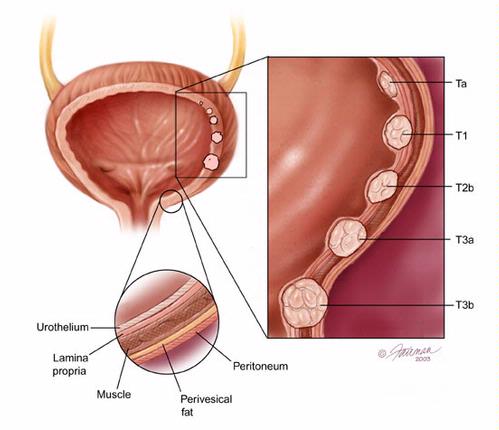Gene Mutation Associated With Rare Eye Disease Also Contributes To Bladder Cancer Growth
Research conducted by Dr. Jayne S. Weiss, Professor and Chair of Ophthalmology at LSU Health Sciences Center New Orleans, and colleagues has found that a defect in a gene involved in a rare disease of the cornea also contributes to the progression of invasive bladder cancer. The findings are published in the November 2011 issue of the peer-reviewed journal, DNA and Cell Biology. It is the featured research of the issue, selected for the cover.
Because earlier studies, including Dr. Weiss’, showed a protein called TERE1 or UBIAD1 is associated with an eye disease involving excess cholesterol as well as invasive prostate cancer, the team investigated its role in both lipid metabolism and the progression of invasive bladder cancer. TERE1 interacts with a cholesterol carrier protein and Dr. Weiss’ earlier research found a TERE1 mutation in Schnyder’s corneal dystrophy, a rare disease characterized by abnormal deposits of cholesterol and other lipids, or fats, in the cornea leading to progressive loss of vision. An elevated level of cholesterol in cells has also been implicated in the development and progression of breast, colon, liver, head and neck, and melanoma cancers.
The objectives of this study were to confirm that TERE1 levels are reduced in advanced bladder cancer and that TERE1 inhibits the growth of bladder cancer cells. The researchers manipulated the proteins thought to control cell stress, growth signaling, and how cholesterol and other fats are handled in cells and tested them in human bladder cancer cells in a mouse model. They found that TERE1 was reduced in a third of the invasive specimens and that when added to cells, TERE1 dramatically inhibited the development of tumors. They also showed that altering the dosage of TERE1 and another protein implicated in disease associated with triglyceride metabolism, called TBL2, regulates cholesterol in cells and that mutations in TERE1 associated with Schnyder’s corneal dystrophy can interfere with binding to a carrier protein that removes cholesterol from cells.
“Research like this helps us target new treatment or prevention approaches for many seemingly unrelated diseases,” notes Dr. Jayne Weiss, who also holds the Herbert E. Kaufman, MD Endowed Chair in Ophthalmology at LSU Health Sciences Center New Orleans and is Director of the LSU Eye Center. “Discovering a new component of the dynamic cellular cholesterol regulatory network gives us information that can be applied to every disease arising from a defect in it. Besides Schnyder’s corneal dystrophy, this includes many types of cancer.”
According to the American Cancer Society, bladder cancer is the fourth leading non-skin cancer in American men, with 52,020 of the 69,250 new cases expected to be diagnosed in men this year. Deaths are estimated at 14,990. Among patients with invasive or advanced disease, therapy consists of radical surgery and/or chemotherapy, which can achieve an overall 5-year survival rate of barely 50%. Those patients with advanced disease have a less than 10% sustained complete response from chemotherapy.




